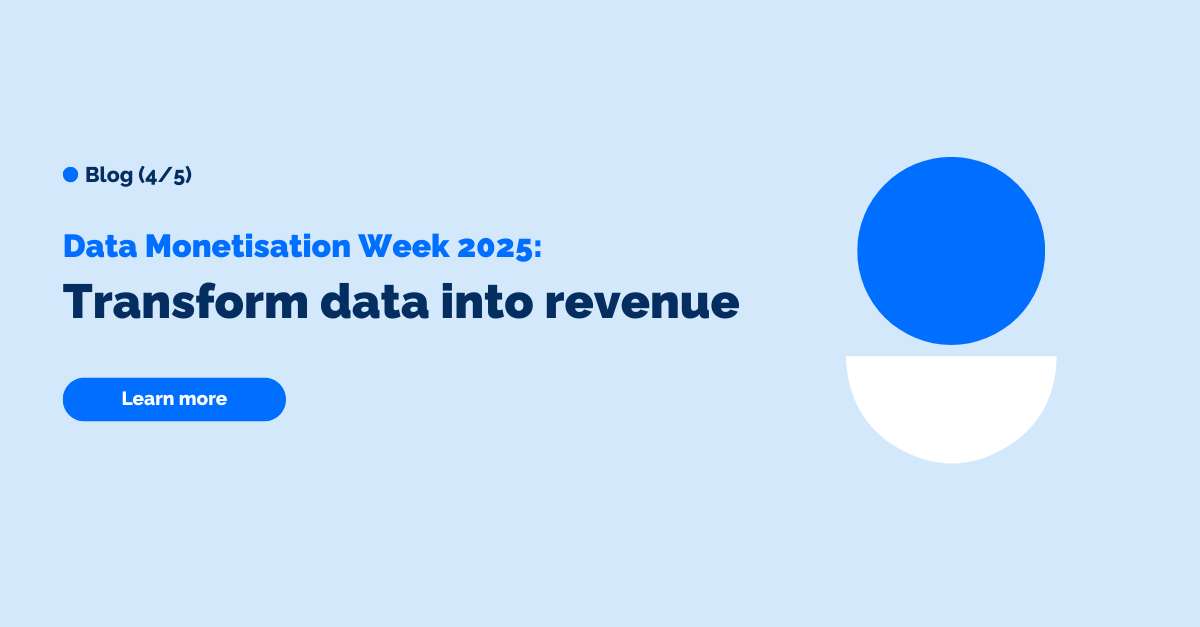What are data silos?
Data silos are virtual containers within an enterprise that limit interaction, collaboration, or communication between business units within the same company. Some data silos are intentionally created for a variety of reasons. There could, for example, be legal requirements to limit communication and interaction between departments in a bank.
Unfortunately, silos often exist against the will of the leadership in an organisation.
Where do data silos come from?
These enterprise silos usually grow due to historical competition between departments, separate IT budgets and approaches, or are the result of a bad integration process after a merger or acquisition. Some departments use proprietary software, curated to their specific needs. Getting data out of these programs is often challenging. Others just don’t like the speed at which the general IT department solves their issues, and start a shadow-IT division.
Data silos originate when departments have their own storage solutions, limit access from other departments, and consider data “theirs”.
Why are data silos problematic?
There are a couple of reasons why data silos cause problems and can best be avoided...
Reason 1: Data silos limit intra-company collaboration
The phenomenon of silos usually results in minimal interaction between departments. In more extreme cases, it will cause internal competition and hostility.
When cooperation between departments is limited, so is the data sharing. On the other hand, even when your different departments are keen on interacting with each other, there still might be technical limitations to their data-sharing capacities.
While data silos may seem harmless, not being able to combine data from multiple departments, sectors, and units offers very concrete problems for managers and leadership.
When a company grows larger, it becomes increasingly harder to gather all that data, and use it for data driven decision making and internal (or even external) analytics.
Reason 2: Data silos reduce trust in data
Instead of leading a business based on gut feeling, you should make data-driven decisions. Encouraging this habit within all your employees and teams will increase productivity, make your business more effective, increase customer service and satisfaction, and give you insights in new business opportunities.
Increasing trust in your data (and employee access, so they can discover it themselves) is crucial to instill trust in your data-driven decisions.
Reason 3: Data silos increase IT and analysis costs
When multiple departments are doing their own analysis on a limited set of your company data, they will reach different conclusions. Non-centralized data is inconsistent or incomplete. The same analysis will often be done multiple times, by different departments. Besides that, the siloed systems are usually managed by different partners and on distinct platforms, increasing IT and maintenance costs.
4. Preventing Data Silos
Because data silos limit insights, communication, collaboration, and productivity, it’s important to prevent them from existing in the first place. If data silos aren’t a thing yet in your organisation (but keep in mind, they probably are, even without you knowing), it’s crucial to have a clear data strategy as soon as possible.
Knowing early on how and where you want to store, gather, and combine your data will help you guide your colleagues and departments to make the right decisions when it comes to onboarding new software, choosing data platforms, and making data-related decisions.
Ensuring your technologies allow for easy data exportation and for direct integration with a data centralisation solution from the start, will help you in preventing data silos.
Besides technological choices, there are also organisational changes to consider; if there are no enterprise silos, it will be difficult for unwanted data silos to get a solid foothold. Ensure cooperation between departments, a clear vision, and universal benefits to data accessibility.
5. Getting rid of your data silos
1. Executive support and drive
Grassroot initiatives to eradicate silos are almost always doomed to failure. A unified data approach is not an easy process to create and implement, and without executive support to get all siloed divisions united in the procedure, you’ll likely be met with a lot of -probably even unintended- opposition.
2. A good tech stack to use
Nothing worse than trying to implement a major organisational and structural change without the right tools.
You’ll need at least a great data lake or data lakehouse to store your data in. Getting your data in that storage solution is the next step: ELT, ETL (reading tip: Is ELT better than ETL?), or just a simple data pipeline (we recommend Fivetran) would do the trick.
Next comes transformation: your data has to be combined, shaped, and moulded into form and structure that’s usable for analysis. This can be done in a multitude of ways, and in different moments in your data journey. Tableau Prep, for example, allows for easy manipulation and preparation (what’s in a name ;) ) of your data, ready for usage in Tableau… or in any other tool, because Prep (check out this training video) can also write back the data to a database.
Alternatively, if you’re more of a LakeHouse fan, and would like to move your transformations to a later stage, why not use DBT?
3. Clear analysis goals
When you have data silos, you’ll have data owners. These owners can be business people, technical people, or just that one employee that’s been managing the system for too long, and doesn’t want to give up their responsibilities. These people often don’t see the benefit of sharing data in an automated and organised way. They are the keepers of their columns, and really enjoy that people have to come and ask for permission to use it.
Showing these owners the benefits of sharing data with other departments is important. They are still “owning” the data, because they have a level of control over the definitions of their columns; instead of keepers of the data, they become scholars; teaching others the added value of their data.
4. Preventing new silos from being created
After spending a whole lot of time and effort in eliminating your data silos, make sure you prevent new ones from appearing. Create a clear blueprint for new data-related deployments, make sure you have a data architecture vision, and offer clear insights in your data flows.
Besides technical documentation and limitations, you should also try to encourage a cooperative culture, where all departments within your organisation are keen on sharing “their” data, for the common good.


